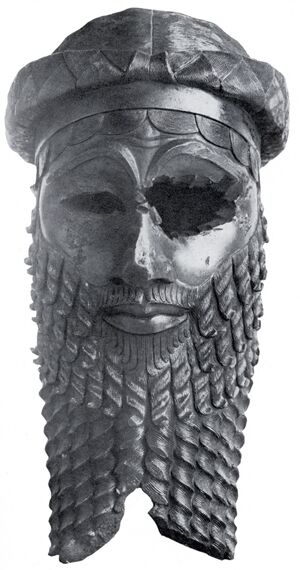The upper classes of ancient Mesopotamia included kings and their families, priests and priestesses, ranking military officers, scribes and wealthier merchants and traders. The hereditary noble class were the kings, land-owning families and priests and priestesses and their families. Keep in mind that ancient Mesopotamia’s history stretches over 3000 years and includes many cultures: Sumerians, Akkadians, Babylonians and Assyrians. We can discuss these groups as one general culture as they all lived in the lands we call Mesopotamia and were very similar.
Social stratification in ancient Mesopotamia grew out of the requirements of the environment. In southern Mesopotamia, the lands were fertile, but the two rivers, the Euphrates and the Tigris flooded often, ruining the crops. Some Mesopotamians began to figure out how to control the water supply to save the crops from floods. They began to dig canals and make dams to both control the waters and to irrigate the crops in drier seasons. With their specialized knowledge and ability to provide direction and coordinate communal labor in water control projects, they gained power and prestige.
Complex societies are unequal societies in that some have more privileges and benefits than others. However, these greater privileges are also tied to greater responsibilities; more is required of the nobility than of commoners.
The king reigns at the top of Mesopotamian society, an almost divine figure who represents the city’s own god. The king makes law, heads the military and provides for building the city’s infrastructure. He lays taxes upon the people to fund the city’s defense and public works such as building temples, digging wells and maintaining city walls.
Of almost equal importance are the priests and priestesses, who mediate between the many gods and the people. In all Mesopotamian cultures, priests and priestesses performed essential religious observances, made sacrifices, kept the calendars and interpreted omens and signs. Priests and priestesses were literate and served as healers. The first doctors and dentists were temple priestesses who cared for the ill.
While not of the nobility, military officers, scribes and merchants who owned their own trading company were in the upper class. Their privileges were less than the nobles’ but greater than then commoners. Neither northern or southern Mesopotamia were rich in natural resources so merchants and their trade networks were necessary to obtain essential goods. Merchants obtained copper ore from the north in exchange for the manufactured goods of the south, for example.
Warfare between Mesopotamian cities was common if not endemic. Cities were rivals and competitors and political squabbling was a part of life. Strong militaries were necessary for a city’s defense or for actively warring with a neighboring city. High-ranking military officers were greatly rewarded for their victories.
Scribes were honored due to their knowledge. It took 12 years to learn cuneiform writing. Scribes worked for the temples, for kings and other noble families and for merchants who needed to keep tract of trades. Scribes also ran scribe schools to teach reading and writing to sons of the nobility.
This article is part of our larger resource on Mesopotamian culture, society, economics, and warfare. Click here for our comprehensive article on ancient Mesopotamia.
Cite This Article
"The Mesopotamian Upper Classes" History on the Net© 2000-2024, Salem Media.
April 21, 2024 <https://www.historyonthenet.com/the-mesopotamian-upper-classes>
More Citation Information.

